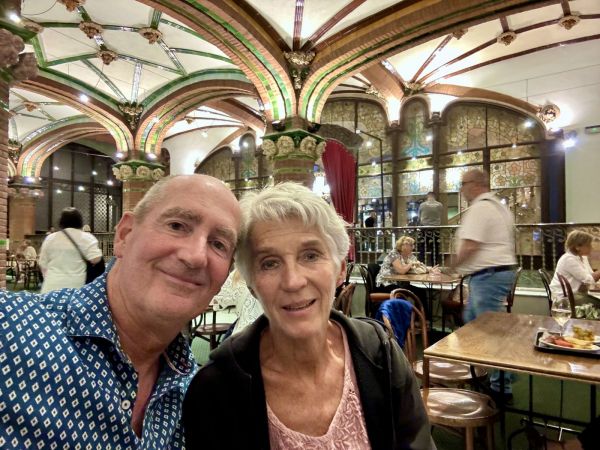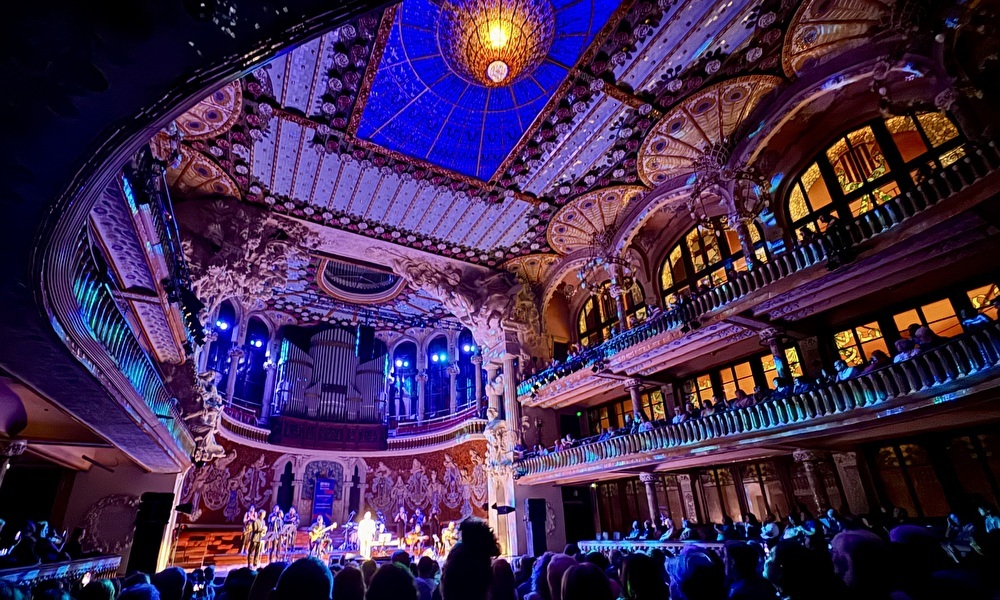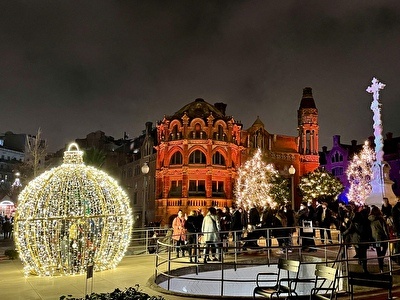Pittingo in concert - Palau de la Música
Pitingo's Soulería de Ida y Vuelta: A Flamenco Fusion Extravaganza at the Palau de la Música
Barcelona's Palau de la Música Catalana, a UNESCO World Heritage Site, stands as a testament to the city's rich cultural heritage. Steeped in history and architectural marvel, it recently played host to a musical spectacle that transcended boundaries – Pitingo's Soulería de Ida y Vuelta.
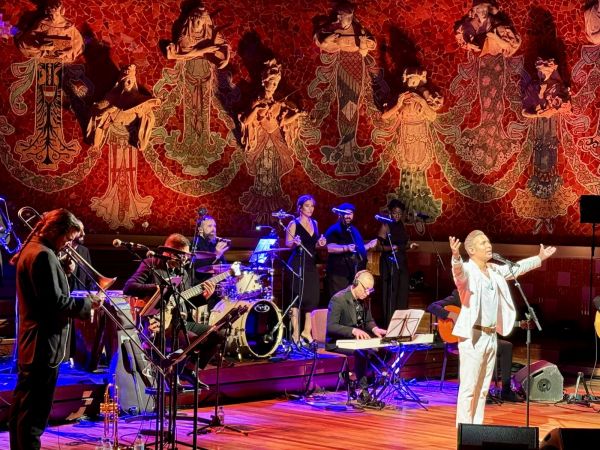
Pitingo, the virtuoso Andalusian gypsy singer, is a musical force known for his ability to weave a mesmerizing tapestry of diverse influences. In his latest venture, Soulería de Ida y Vuelta, he takes the audience on a journey where the soulful depths of flamenco meet the fervor of soul, gospel, and Latin music. This fusion, a mestizo and transatlantic musical message, is a testament to Pitingo's unparalleled ability to unite cultures through his art.
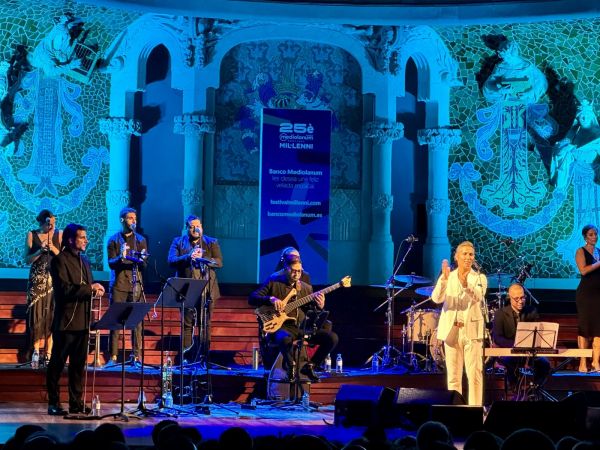
The Palau de la Música Catalana, with its exquisite Catalan modernista architecture, provided a fitting backdrop for Pitingo's performance. The concert hall, bathed in colored light, became a canvas for the artist's sonic brushstrokes. The rich decoration and stained-glass panes created an ambiance that echoed the fusion of genres happening on stage. The multicultural mix doesn't end with the music itself. Pitingo's ensemble, a multiracial group of 35 musicians from around the world, adds an extra layer of richness to the performance. As the notes reverberate through the architectural masterpiece, the audience was treated to not just a musical performance but to an immersive experience.
Palau de la Música Catalana: A Symphony of Art and Architecture
In the heart of Barcelona, a testament to the city's cultural vibrancy and architectural brilliance stands tall — the Palau de la Música Catalana. Designed by the visionary architect Lluís Domènech i Montaner, this concert hall, built between 1905 and 1908, is not merely a venue for musical performances; it's a masterpiece that harmonizes the rich heritage of Catalonia with the essence of modernism.
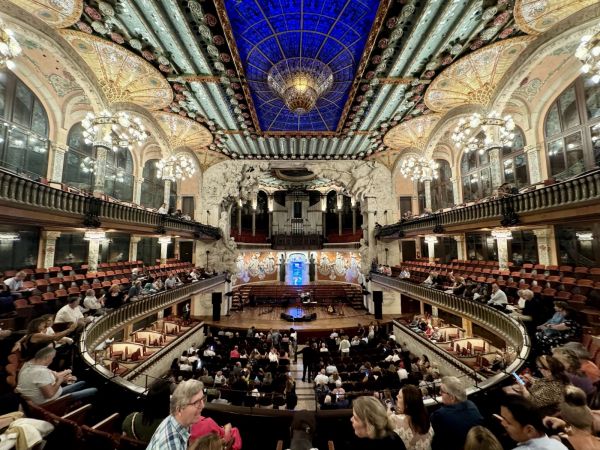
Commissioned by the choral society Orfeó Català, a pivotal force in the Catalan Renaixença or Rebirth movement, the Palau was a collaborative effort fueled by the financial support of Barcelona's elite. The result was a structure that won accolades, not just for its aesthetic appeal but also for its rational design, a hallmark of the modernisme style.
At first glance, the Palau might overwhelm the unaccustomed eye with its riot of ornamentation, but, as architectural rationalists affirm, every element follows a precise logic. The fusion of brick and iron, manifested in the curtain wall structures, was a groundbreaking innovation of its time.
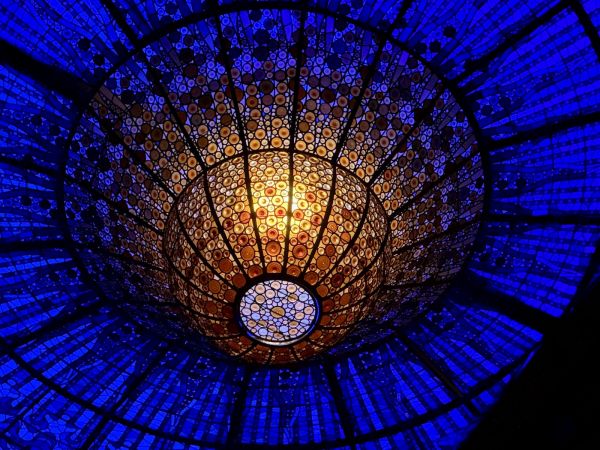
The concert hall, accommodating 2,200 people, is a unique marvel. It stands as the only auditorium in Europe illuminated entirely by natural light during daylight hours. Stained-glass panes and an enormous skylight, a masterpiece designed by Antoni Rigalt, create an ethereal atmosphere, bathing the hall in hues of gold and blue reminiscent of the sun and the sky.
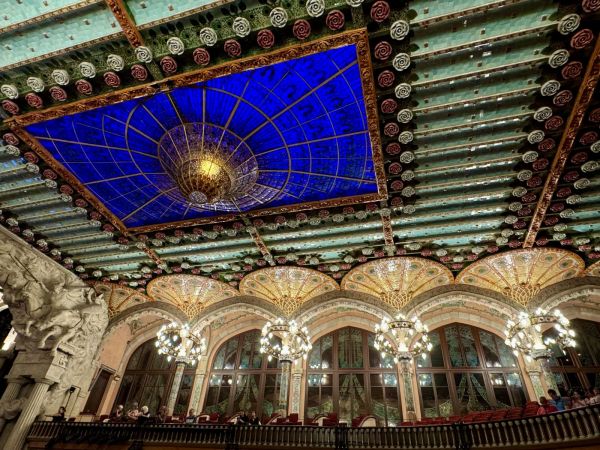
As one steps into the hall, the sculptural decor narrates a tale of choral music. A choir of young women encircles the stained-glass "sun," paying homage to Anselm Clavé, a revered choir director. The arch over the stage, sculpted by Dídac Masana and Pablo Gargallo, unites folk music on the left with classical music on the right, forming a symbolic bridge between genres.
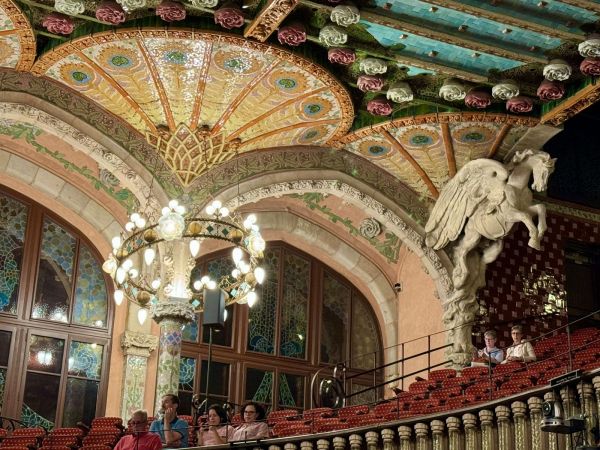
The muses, sculpted by Eusebi Arnau, grace the back of the stage, each playing a different musical instrument. The mosaic work, a riot of color, weaves a visual symphony. Winged horses, symbolic of Pegasus, adorn the upper balcony, symbolizing the soaring imagination that music inspires.
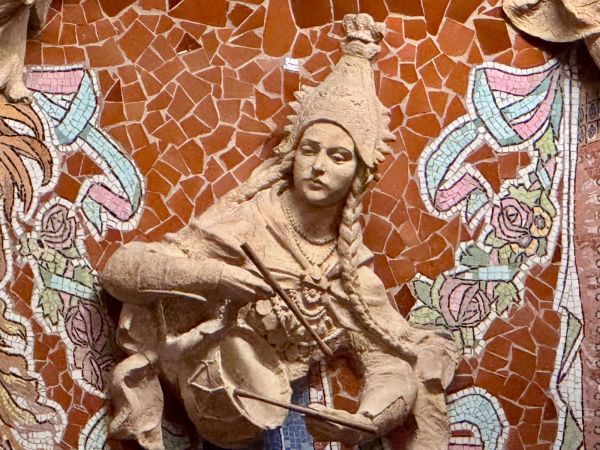
The white tile medallions, bearing the names of musical luminaries, and the ceramic depictions of Catalan music history complete the visual narrative. In this space, where architecture and art converge, the Palau de la Música Catalana stands as a living testament to the enduring power of music and creativity. A UNESCO World Heritage Site, it continues to enchant over half a million visitors each year with its symphony of sound, light, and Catalan spirit.
